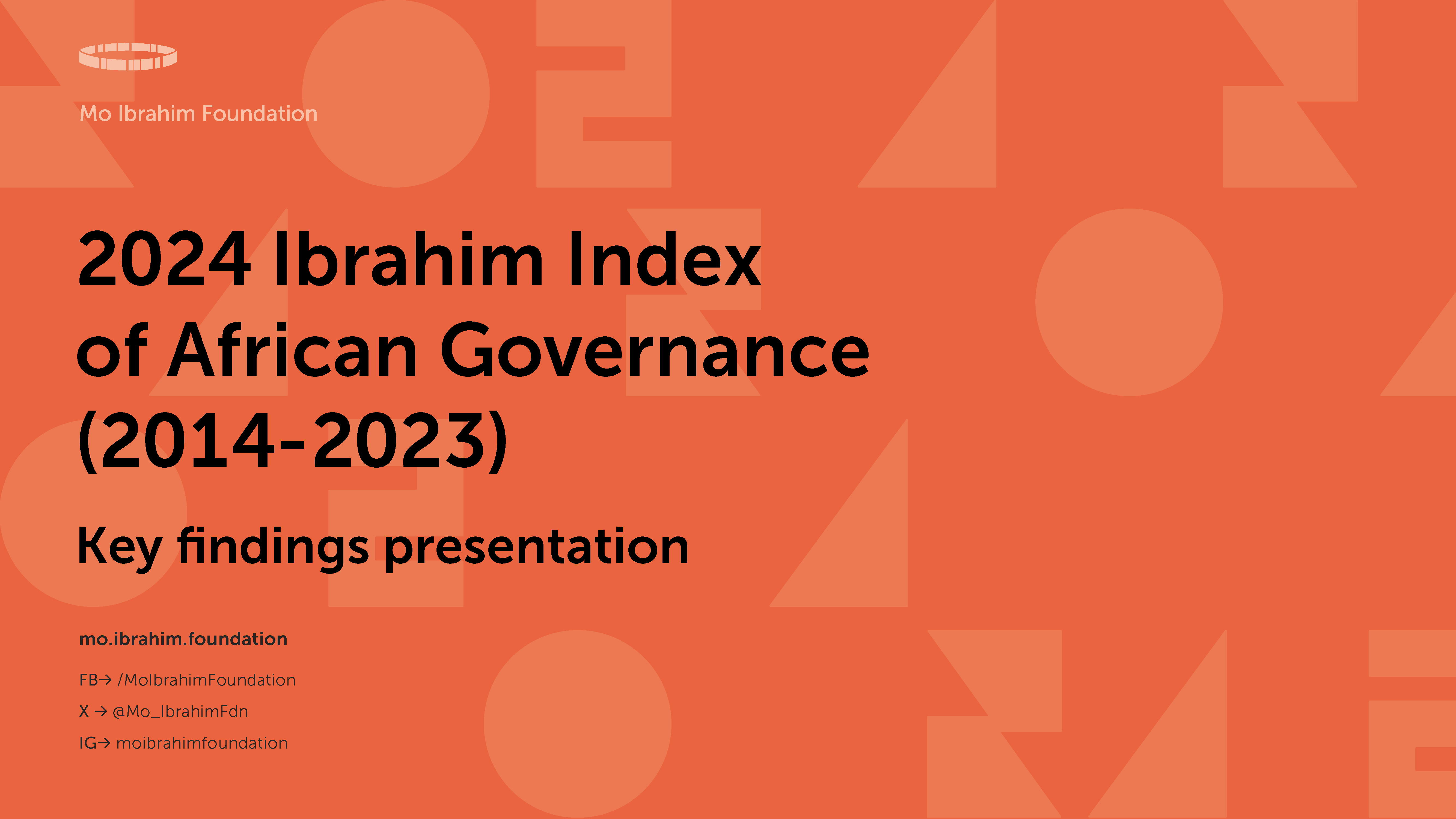Media info
The IIAG is the most comprehensive dataset for any audience interested to assess governance performance in Africa on a whole spectrum of thematic governance dimensions, including security, justice, democracy, transparency, rights, economic opportunity and health – at the continental, regional, and national level.
The IIAG online data portal is an interactive tool for users to access the full dataset, explore the data and extract data visualisations.
The 2024 IIAG offers an overview of Africa’s governance progress and an assessment of the state of the continent over the decade 2014-2023.
The latest IIAG Report, details of the methodology, and many other useful documents are available to download on this website.
If you would like to discuss the IIAG and its findings please get in touch with our media team at [email protected].
 Algeria
Algeria
 Angola
Angola
 Benin
Benin
 Botswana
Botswana
 Burkina Faso
Burkina Faso
 Burundi
Burundi
 Cabo Verde
Cabo Verde
 Cameroon
Cameroon
 Central African Republic
Central African Republic
 Chad
Chad
 Comoros
Comoros
 Congo Republic
Congo Republic
 Côte d'Ivoire
Côte d'Ivoire
 DR Congo
DR Congo
 Djibouti
Djibouti
 Egypt
Egypt
 Equatorial Guinea
Equatorial Guinea
 Eritrea
Eritrea
 Eswatini
Eswatini
 Ethiopia
Ethiopia
 Gabon
Gabon
 Gambia
Gambia
 Ghana
Ghana
 Guinea
Guinea
 Guinea-Bissau
Guinea-Bissau
 Kenya
Kenya
 Lesotho
Lesotho
 Liberia
Liberia
 Libya
Libya
 Madagascar
Madagascar
 Malawi
Malawi
 Mali
Mali
 Mauritania
Mauritania
 Mauritius
Mauritius
 Morocco
Morocco
 Mozambique
Mozambique
 Namibia
Namibia
 Niger
Niger
 Nigeria
Nigeria
 Rwanda
Rwanda
 São Tomé and Príncipe
São Tomé and Príncipe
 Senegal
Senegal
 Seychelles
Seychelles
 Sierra Leone
Sierra Leone
 Somalia
Somalia
 South Africa
South Africa
 South Sudan
South Sudan
 Sudan
Sudan
 Togo
Togo
 Tunisia
Tunisia
 Uganda
Uganda
 Tanzania
Tanzania
 Zambia
Zambia
 Zimbabwe
Zimbabwe




